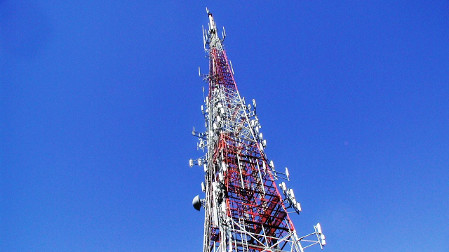AFCCE: ATSC 3.0 Won't Interfere With Wireless

WASHINGTON—A coalition of engineers who work on projects in the Federal Communications Commission pipeline has endorsed adoption of ATSC 3.0 as the next over-the-air television transmission standard in the United States.
The Association of Federal Communications Consulting Engineers filed ex parte comments with the FCC supporting authorization of the 3.0 bootstrap—the foundation technology of the standard—adopted in March by the Advanced Television Systems Committee.
The ATSC is in the process of developing and approving the remaining components of the standard, and shooting for completion by next spring, in time for the post-TV spectrum incentive auction repack. The National Association of Broadcasters, the Consumer Technology Association, the AWARN Alliance and the Association of Public TV Stations petitioned the FCC in mid-April to authorize voluntary adoption of ATSC 3.0. The commission put the petition out for comment two weeks later.
The AFCCE, whose board includes Bob Weller and David Layer of the National Association of Broadcasters, among others, also weighed in on interference concerns expressed in a filing from CTIA—The Wireless Association:
“Absent from the discussion of ATSC 3.0 thus far is a consideration of the impact this technology could have on wireless operations in the 600 MHz band. The commission has repeatedly acknowledged that the coexistence of wireless and broadcast operations in the 600 MHz band requires the development and enforcement of carefully drawn technical rules to prevent interference,” it said.
In its filing, the AFCCE said ATSC 3.o would be no different than ATSC 1.0, the current broadcast TV transmission methodology, when it comes to interference.
AFCCE… “believes that, based on known technical data, present interference protection requirements are adequate to prevent interference between ATSC 3 systems, between ATSC 1 and ATSC 3 systems, and between ATSC 3 and [cellular] LTE systems,” the filing stated.
The CTIA noted that the FCC’s model for repacking the television band after the TV spectrum incentive auction used the current version of ATSC to assess interference rather than 3.0.
“Just as NAB argued that detailed technical information regarding wireless deployments was essential to minimizing inter-service interference to broadcasters, so too should broadcasters provide interested parties with a clear understanding of how the change to ATSC 3.0 will impact the interference environment in the 600 MHz band,” it said.
In response, the AFCCE cited an April 8, 2016, report by Meintel, Sgrignoli & Wallace, saying that the “interference potential of ATSC 3 is likely to be no greater than that of ATSC 1.0.”
The group said three parameters were relevant to co-channel interference—occupied bandwidth, in-channel power and peak-to-average power ratio. “As noted in the MSW report, because the occupied bandwidth of ATSC 3.0 is slightly greater than that of ATSC 1.0 but the total power is the same, the power density over the occupied portion of the 6 MHz TV channel is slightly less than ATSC 1.0,” making it less likely to interfere with LTE systems at less than 100 percent overlap.
With regard to peak-to-average power ratio, or PAPR, the engineers said ATSC 3.0 had a PAPR about 2.5 dB greater than ATSC 1.0, making it “essentially the same as Additive White Gaussian Noise,” which was used for the FCC’s interservice interference (ISIX) protection analysis, and is filtered by LTE.
“Therefore, it appears the FCC’s ISIX analysis is adequately protective of LTE receivers for ATSC 1.0 or ATSC 3.0 services that are co-channel or partially co-channel,” the AFCCE filing said.
Broadcast-wireless interference is not new. It was the CTIA that called for a freeze on channel 51 in 2011 after TV channels 52-69 were reassigned to wireless carriers three years earlier. Wireless carriers licensed to build out channel 52 discovered interference from neighboring TV stations on channel 51, and petitioned the commission to freeze new applicants and move incumbents. (See, “New Slots for Channel 51 Stations?” May 25, 2012). Additionally, CTIA members include AT&T, Verizon and T-Mobile, which collectively may spend upwards of $23 billion on TV spectrum up for auction in the 600 MHz band.
Also see TV Technology’sATSC 2.0 silo, and...
Aug. 10, 2015
“Engineers Work With Federal Government”
Well-known to a certain segment of the broadcast engineering profession, the Association of Federal Communications Consulting Engineers recently held its annual meeting in Annapolis, Md. Radio World spoke with new AFCCE President Eric Wandel about the organization, where it’s been and where it’s going.
Get the TV Tech Newsletter
The professional video industry's #1 source for news, trends and product and tech information. Sign up below.
